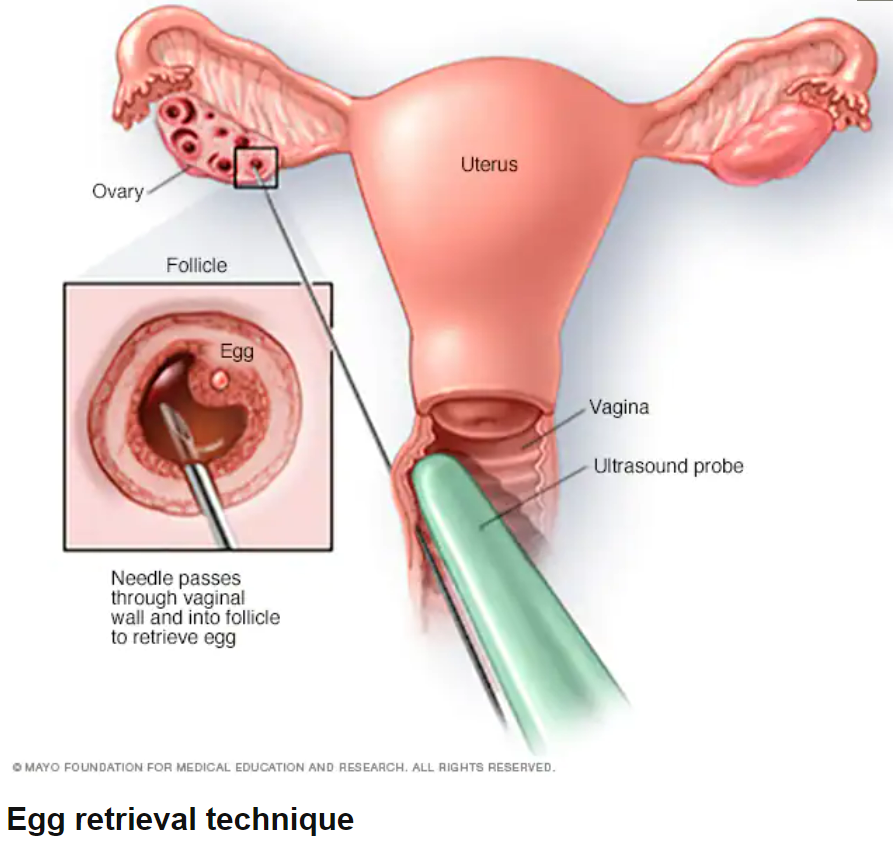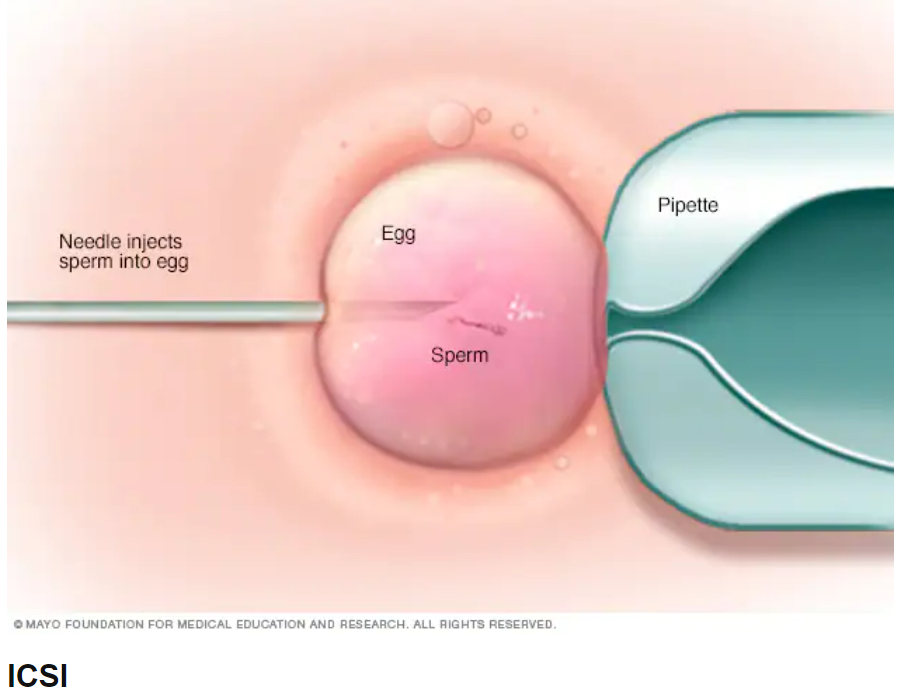Egg Retrieval & Fertilization
Egg retrieval
Egg retrieval can be done in your doctor's office or a clinic 34 to 36 hours after the final injection and before ovulation.
During egg retrieval, you'll be sedated and given pain medication. Transvaginal ultrasound aspiration is the usual retrieval method. An ultrasound probe is inserted into your vagina to identify follicles. Then a thin needle is inserted into an ultrasound guide to go through the vagina and into the follicles to retrieve the eggs. If your ovaries aren't accessible through transvaginal ultrasound, an abdominal ultrasound may be used to guide the needle.
The eggs are removed from the follicles through a needle connected to a suction device. Multiple eggs can be removed in about 20 minutes. After egg retrieval, you may experience cramping and feelings of fullness or pressure.
Sperm retrieval
If you're using your partner's sperm, he'll provide a semen sample at your doctor's office or a clinic through masturbation the morning of egg retrieval. Other methods, such as testicular aspiration — the use of a needle or surgical procedure to extract sperm directly from the testicle — are sometimes required. Donor sperm also can be used. Sperm are separated from the semen fluid in the lab.
Fertilization
Following retrieval, eggs are placed in a nutritive liquid (culture medium) and incubated. If you are using conventional IVF, sperm is placed in the dish with the eggs and the eggs are allowed to fertilize as they would in the fallopian tube. Only mature eggs will fertilize normally. If you are using ICSI (intracytoplasmic sperm injection) for fertilization, the eggs are stripped of their surrounding cells (cumulus cells) a few hours after egg retrieval and the mature eggs are injected with one sperm each. Successful fertilization is checked the next day for both conventional IVF and ICSI.
Fertilization can be attempted using two common methods:
Conventional insemination - during conventional insemination, healthy sperm and eggs are mixed and incubated overnight.
Intracytoplasmic sperm injection (ICSI) - in ICSI, a single healthy sperm is injected directly into each mature egg. ICSI is often used when semen quality or number is a problem or if fertilization attempts during prior IVF cycles failed.
During you ovarian stimulation protocol, you can expect to know approximately how many follicles were stimulated. Not all of these will produce an egg. After your egg retrieval you can expect to know how many eggs were retrieved. After fertilization, you can expect a call from your fertility team with the number of eggs successfully fertilized, then the number that continued to thrive to Day 3. If you choose to undergo further testing/ genetic testing, this will take place at this time. Read more about that in the next blog here.
Learn more about this process from our resource The Mayo Clinic here.
Last updated- 2/15/24


